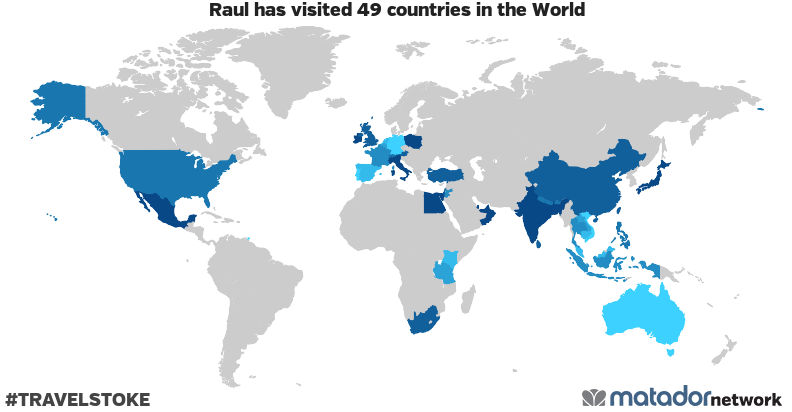Turmeric in your drink? Or perhaps a bowl of poké—the
Hawaiian alternative to sushi—for lunch? There’s never a dearth of interesting
food and drink trends that diners here in India are becoming privy to. Food
writer RAUL DIAS, brings you a few
such trends that promise to make the start of this New Year a yummy one!
The
Turmeric Twist
With
the turmeric latte being the newest beverage fad in the West with its sudden
meteoric rise, Indian restaurants and bars are loathe to be left behind, with
all things turmeric finding a firm footing on their dessert and drinks’ menus,
giving a stylish fillip to good old haldi
walla doodh! Known multifariously as ‘golden milk’ or ‘sunshine milk’ the
turmeric latte is only one such iteration, while others like turmeric leaf
ice-cream and a fresh turmeric-infused gin cocktail up the ante in the
innovatively yummy department.
Who’s Doing It?
·
Golden Milk Iced Coffee at The Pantry,
Mumbai
·
Muskmelon Pannacotta with Turmeric Leaf
Ice-cream at Toast & Tonic, Bengaluru
·
Turmeric, Maple and Almond Latte at The
Korner House, Mumbai
·
The City of Nizam Turmeric-infused Gin
Cocktail at Ek Bar, New Delhi
·
Turmeric-infused Dry Fruit Milk Sorbet at
Jeon, Mumbai
·
Turmeric Latte at Nosh, Suryagarh, Jaisalmer
·
Eureka—The Turmeric-infused Gin Cocktail
at Bodega Cantina-Y-Bar, Kolkata
Coffee
Cocktails, Anyone?
One
of the world’s favourite morning beverages—coffee—is getting another shot at
racing ahead of tea up the popularity charts in the most interesting and
unusual ways. Finding itself paired with everything from orange liqueur and
smoky whiskey to the more outré activated carbon and gondhoraj lebu, coffee is taking a slow but steady detour from the
soft beverage section on menu cards to the ‘hard’ one with its many
experimental iterations one little bean at a time!
Who’s Doing It?
·
‘The Morning Brew’ at The Sassy Spoon,
Mumbai
·
‘Mad Men’ at Monkey Bar, Kolkata
·
‘From Aura with Love’ at Aura—The Vodka
Bar, The Claridges, New Delhi
·
‘Oh! Sweet Ninja’ at Shiro, Bengaluru
·
‘The Caffeine Kick’ at Silver Beach Café,
Mumbai
·
‘Activated Charcoal Martini’ at Bodega
Cantina-Y-Bar, Kolkata
·
‘Coorg Jager’ at 212 All Good, Mumbai
Poké
Me!
Forget
about ceviche. Leave aside sushi and kiss that carpaccio goodbye for there’s a
new hot… err, we mean cold alternative on the scene. Welcome to the tropical
world of the Hawaiian wonder—poké! Luscious cubes of fish, generally lean tuna
sit, atop a bed of rice in a bowl that is then anointed with sesame oil, lemon
juice and topped with pickled vegetables and scallions with a sprinkling of
toasted sesame seeds to finish this one dish wonder off with. Ah bliss…
Who’s Doing It?
·
The Poké Bowl at Bastian, Mumbai
·
Chilli Tossed Tuna Poké at Toast &
Tonic, Bengaluru
·
Andaman Island Tuna Poké Bowl at 212 All
Good, Mumbai
·
Spicy Salmon Poké Bowl at Yuuka, St.
Regis, Mumbai
·
Ahi Tuna Poké With Seared Albacore at
Ellipsis, Mumbai
The
‘Glocal’ Restaurant
This hybrid species of restaurant is one that flirts with international
flavours, textures and presentation styles, but with a strong and conscious
focus on procuring produce that is fresh, healthy and most importantly local. A
farm-to-table concept given a shot in the arm by a menu that features new world
cuisine that is the hot favourite the world over. A sort of stylish food with a
conscience, if you will!
Who’s Doing It?
·
Toast & Tonic, Bengaluru for its
ingenious use of hyper local ingredients in its New York East Village-inspired
dishes.
·
212 All Good, Mumbai for its promise to
create incredibly wholesome food and drinks that are shy of preservatives and
embrace everything that is good for your gut and for its onsite herb garden
that encourages diners to pluck herbs that they can then add to their dishes.
·
Farmer & Sons, Mumbai for its focus on
delicious, comfortable and clever dishes using local direct farmer-sourced produce
with a focus on excellent flavours and textures.
Betel
Mania
Paan,
that de facto, post-prandial indulgence for most of us Indians, that promises
to alleviate everything from digestive problems like acidity and gas to
freshening one’s breath, has been enjoying a makeover of epic proportions and
finding itself in a host of desserts and drinks that each seek to give it some
serious ‘high street’ cred, and thus turning over a new leaf (pun intended!)
for the betel leaf.
Who’s Doing It?
·
Paan Martini Cocktail at The
Sahib Room & Kipling Bar, St. Regis, Mumbai
·
Paan-stuffed Gujia at
Kava at the Fairfield Marriott, Lucknow
·
Bambaiyya Paan Kulfi at
Jeon, Hotel Sea Princess, Mumbai
·
Paan Mojito at Dhaba, The
Claridges, New Delhi
·
Gulkhand and Vanilla
Ice-cream Paan Shot at Punjab Grill, Mumbai, Delhi, Hyderabad, Chennai and
Bengaluru.
(An edited version of this article appeared in the January 2017 issue of Hi!Blitz Magazine, India)

























